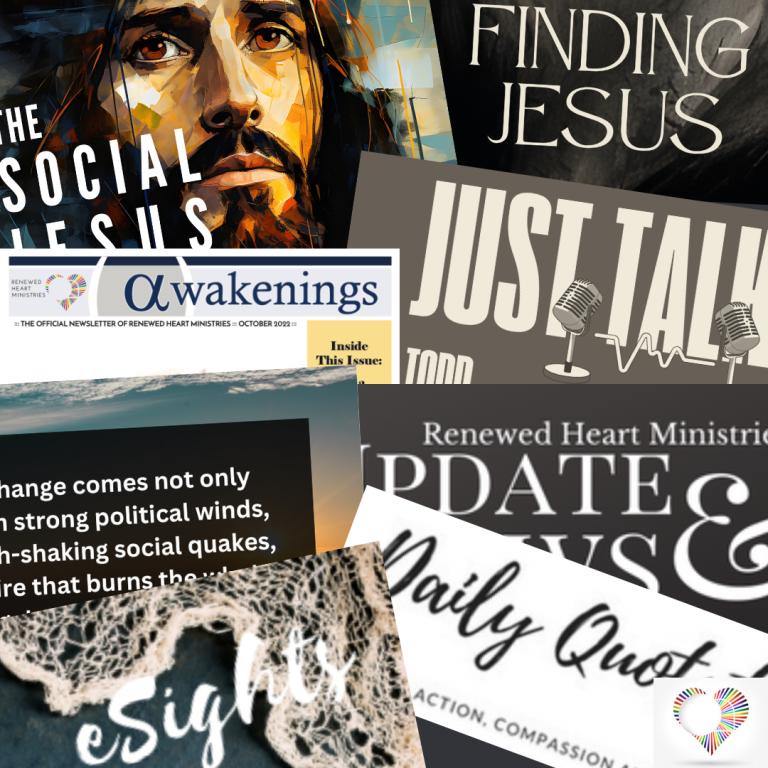
Again, let me give you just one example of the four gospels’s problematic language when it comes to disabilities. When Matthew’s gospel refers to religious leaders that were complicit in political and economic harm against the vulnerable people in Jesus’ society, it portrays Jesus telling the people, “Leave them; they are blind guides. If the blind lead the blind, both will fall into a pit” (Matthew 15:14).
Welcome Readers! Please subscribe to Social Jesus Here.
This is Part 2 of The Jesus Story and Living with Disabilities
(Read this series from its beginning here.)
In passages like this, the gospels use blindness, deafness, the inability to speak, and the inability to walk as metaphors for something sinful or erroneous while characterizing mobility, vision, and hearing ability as righteous, whole, just, or holy. This language characterizes folks who live their daily lives with any of these disabilities as somehow of less worth or value. And it is akin to how Blackness is often equated with evil or sin (i.e. “the black sheep of the family) while whiteness and light is equated with righteousness or holiness. These racial implications have been promoted by those who subscribe to White supremacy for centuries. But it’s not especially righteous to have no disabilities. Being disabled is not a metaphor for being evil, sinful, or broken.
In this week’s passage, John’s gospel uses the man who couldn’t walk to set up a conflict between Jesus and the powerful in his society over Jesus healing the man on the Sabbath and Jesus’ relation to the Divine. I wish the gospel writers had given this man a name in a way that would have affirmed his humanity and worth, but he is instead presented as a nameless narrative object that only serves as a plot point in the larger story. This pattern also repeats in the gospels. The synoptic example is in Mark 2:1-12, and both Mark and John include a variation of Jesus’ instruction: “I tell you, get up, take your mat and go home” (Mark 2:11, cf. John 5:8). In Mark, the story of Jesus healing a man who could not walk is at the center of a discussion on forgiveness. Here in John, it is used to discuss Sabbath observance and Jesus’ divinity: “For this reason they tried all the more to kill him; not only was he breaking the Sabbath, but he was even calling God his own Father, making himself equal with God” (John 5:18).
Over and over, disabilities are a theme in the gospels. The gospel authors characterize Jesus as reversing disabilities and using disabilities as a metaphor for things we need liberation from. And the gospel authors use Jesus’ interaction with people with disabilities to provide a context for other theological debate of that time.
Although I wish the gospel authors had handled disabilities with greater care, the evidence Jesus repeatedly gives for the authenticity of his teachings is his interactions with people living in poverty and people living with disabilities.
For example, when John the Baptist’s disciples question whether Jesus was really the one they had been looking for, Jesus replies, “The blind receive sight, the lame walk, those who have leprosy are cleansed, the deaf hear, the dead are raised, and the good news is proclaimed to the poor” (Matthew 11:5, cf. Luke 7:22). In Luke’s gospel, Jesus’ gospel is defined in itself as good news the poor, liberation for the oppressed, and the restoration of sight for the blind (see Luke 4:18). This challenges me another level.
I grew up in Christianity, and heard the gospel more times than I can count. But it wasn’t until much later, as an adult, that I ever heard the gospel as good news for the poor or good news to people living with disabilities. The good news was presented to me as universal, for all, poor and rich alike, because it had precious little to do with the material, economic, or political world around us. The gospel I grew up hearing about had zero specific application to the poor or those with disabilities, because it was solely about giving everyone forgiveness of sins and the assurance of heaven. That forgiveness and assurance never needs to mention poverty or disabilities, and in fact, the gospel I grew up with never did.
Where does this leave us today who want to return to a more consistent definition of what it means to follow the Jesus in the story? That’s what we’ll consider in Part 3.
Are you receiving all of RHM’s free resources each week?
Begin each day being inspired toward love, compassion, justice and action. Free.
Sign up at HERE.















